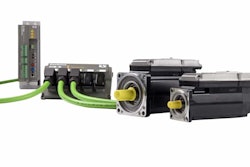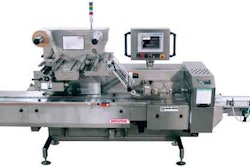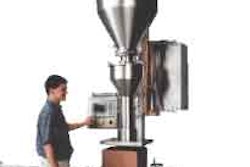
Between designing and printing a package there is digital prepress—the complex process of transferring a design file to printing plates. Often, design-to-print projects are plagued with frustrating back-and-forth error detection and correction, cost overruns, finger pointing, and ultimately a package that may not offer the graphic zip the company desires.
Although innovations in all aspects of prepress technology are being made by the leading suppliers, two areas of development stand out. Online approval aided by collaboration tools and the spread of industry standards. These are profoundly impacting the ability of digital prepress to shorten cycle time, reduce cost, and improve graphic quality.
“What consumer products companies really want our help with is taking time out of the cycle,” says Steven Carter, director of technology, St. Louis Facility, Southern Graphic Systems. “Online approval and collaboration tools can make that happen.”
Carter tells the story of a project that did not use online collaboration, one that is all too familiar in design-to-print projects. This particular project required 18 weeks from the time the packaged goods company decided to go with a new package to when it was printed. Upon analysis of the project, Carter documented that fifteen of the 18 weeks—fully 83 percent of the project's time—involved the approval of prepress proofs. Proofs would arrive at someone's desk and remain there until the person picked it up, reviewed it, and moved it to the next person in the approval chain or returned it to the prepress project manager or the printer for changes. Only three weeks were actually required for transforming the files to plates and doing press checks.
Dave Anderson, vice president of business development for consumer packaging goods, Vertis Communications, has similar observations. “We've analyzed the prepress workflow and found that most jobs are sitting on an approver's desk, just waiting for them,” he says. “This consumes about 70 percent of the total cycle time.”
Vertis Communications now uses online tools that feature automated notification and soft proofing. Clients receive an email when something is ready for them to approve or comment on during the prepress process. A link in the email automatically takes the client to the workflow task. “We've been able to quantify a 20-to-27 percent reduction in cycle time when online collaboration tools are utilized,” Anderson says.
Craig Labossiere, packaging manager, Optium, a prepress services provider, began rolling out collaboration tools to his clients this year. “Instead of making a hard copy proof and shipping it, we put the file up on our Web page and invite the client to view it,” he says. “The extended team can collaborate, leave annotations, input notes, and participate in discussion threads. Email notification drives the process forward. An action history documents everything that has ever happened to that file. Online approval and collaboration is a big advance in terms of shortening cycle time and documenting the history of a project.”
Many of the leading prepress technology suppliers including, Artwork Systems, Esko-Graphics, and others—as well as prepress houses—offer online approval and collaboration solutions.
Moving toward standards
Like online approval and collaboration, the emergence of industry standards is helping reduce cycle time, improve quality, and squeeze cost out of the process. In digital prepress, files move back and forth between prepress and designer when errors in these complex files are discovered. “When I worked at Nestlé, we always seemed to be losing time because files contained mistakes such as missing fonts or links to graphic images,” said Christian Blaise, who is international sales account manager at Enfocus, a leading brand in PDF and production automation technology. He is also co-chair, with Steven Carter at Southern Graphics, of the Ghent PDF Workgroup Packaging Subcommittee.
Several years ago, the Ghent PDF Workgroup Packaging Subcommittee began a pioneering effort to develop a rulebook—profile—of the elements needed in a correct PDF for packaging. Blaise piloted the first profile two years ago at Nestlé. Today, the Ghent PDF Workgroup (www.gwg.org) has developed profiles for high-and-low resolution files for the upstream workflow between brand owner, designer, and prepress, and three profiles for downstream workflow of prepress to flexographic, offset, and gravure printing. Leading prepress technology suppliers are incorporating Ghent PDF Workgroup profiles in their products for certified PDF workflows.
Blaise says that profiles have not reached the point where a designer pushes a button and everything flows smoothly the first time. “My advice to brand owners is to pick one product line and assemble a team of one designer, prepress house, and printer,” he says. “Then pilot a program using the Ghent PDF standards. The pilot may take six months, but when it is completed, the brand owner should have achieved a level of proficiency that can spread rapidly through the entire organization. We estimate that a certified PDF workflow can help reduce cycle time by at least 10 percent per project.”
John Henry, a multi-packaging solutions company based in Lansing, MI, helped pilot the Ghent PDF Workgroup profile for flexography. Pete Martens, packaging prepress operations specialist, says, “Typically, we see 17 to 18 errors in an average PDF supplied to us. During the pilot project, the profiles targeted and eliminated 60 to 70 percent of the usual errors. Eliminating these errors “upstream” increased productivity, eliminated extra cost downstream, and saved several days—and sometimes up to a week—per file.”
The Ghent PDF Workgroup is not alone in establishing standards in order to decrease process variation. Other notable contributors have been the International Color Consortium (ICC) color standards, The Standard Web Offset printing Standard (SWOP), and the GRACoL guidelines for quality color printing.
Online collaboration reduces cycle time
The design firm Gravity, the creative arm of Phototype, a packaging and support company, was selected by Jarden Home Brands to completely redesign the company's Ball Home canning and crafting product line. More than 60 SKUs and a variety of packaging formats—corrugated cases, resealable pouches, folding cartons, shelf packaging—were involved. Offset and flexographic printing were utilized by a host of printers and converters.
“To do something like this in the past, you would have had to have everybody in the same room and shown hard copy of the designs,” says Terri McConnell, business and brand strategist, Gravity. “Instead, at the very beginning of the process, we created a Web site, uploaded the designs under consideration, and invited the vendors and key people from the client side to comment.
“This gave us the printer's feedback on challenges very early in the process, and we took the feedback into account as the designs progressed. The printers told us the online tools significantly decreased the potential for downstream problems, helped to ensure the client's packages were as close to the design intent as possible, and decreased their turnaround time. A project like this would normally average nine months from start to completion. With online collaboration, it required four.”
McConnell said that by moving prepress discussions upstream to the designers and downstream to printers, key decisions are made sooner rather than later. “We don't see design-to-print happening in individual silos anymore, and that is a very positive development for the packaged goods companies,” she says.
Internal prepress standards
Standards do not have to come from standard-setting bodies. Just ask Lisa Schwer, group project manager, Nestlé Purina PetCare. Schwer was instrumental in developing prepress standards for pet-food packaging and collateral that spans more than 1,000 SKUs, including packaging formats such as bags, pouches, labels, corrugated, point-of-purchase displays, and more. Printing includes flexographic, offset, and gravure.
“Until a few years ago, we did not have a formal prepress requirement list,” says Schwer. “Basically, we handed off the files from the designer directly to the separator. This meant that any errors in the files were caught downstream, which led to longer and more costly projects.”
Three years ago, Schwer helped lead a team of designers and prepress experts to create a requirements list and a process to be applied to every Adobe Illustrator design file. Designers were required to run a preflight analysis based on the requirements list. Errors found during the preflight had to be fixed prior to handing off the artwork. Now when artwork is released from design to preprint, the designer includes the disc with the file, a catalog of the disc's contents, an annotated printout of the design with callouts relating to how specific colors are built, a designation of whether images are high or low resolution, dimensions, locations of graphic files, and special finishing instructions.
“This process decreased prepress rework by about 40 percent,” Schwer says. “My advice for project managers is to meet with your separators and designers as a team on a regular basis to discuss making the workflow more efficient. It is also vital to have a prepress requirement or policy in place. Definitely stay abreast of technology.”
Improves graphic appeal
When Linda Woods, packaging manager, Maple Leaf Foods, learned during a seminar about the Opaltone certified workflow, she was intrigued. Opaltone certifies prepress, printer, and ink supplier to its seven-color printing standard, which effectively does away with spot colors. Printers change plates, not ink, which decreases their make-ready charges.
The make-ready cost savings appealed to Woods. The potential for more vibrant graphics was even more appealing. Six SKUs of the company's Top Dog hotdog packaging were selected for a pilot project. Hard copy digital proofing was used in the early stages to test colors, especially to see if the seven-color process could match the signature Pantone 485 for Maple Leaf red. “The seven-color process created graphics that are more vivid than we've been able to achieve to date,” Woods says.
Craig Labossiere at Optium, the project's prepress supplier, says that reliance on digital proofing and having a workflow where all the partners, including ink supplier, were certified to the same set of standards shortened time to market and put products on the shelf faster.
Prepress technology advancing on a broad front
Every aspect of prepress is being pushed farther by advancing technology. For example, new digital presses are able to eliminate the need for plates and die-cutting, which opens the door to fast and economical solutions for short-run corrugated printing.
A good example of digital printing at work can be found at St. Hart Container, one of Southern California's largest manufacturers of custom corrugated packaging. The company recently installed a digital printer from HP Scitex.
“The first week we had the digital press, a distributor needed a custom sample display for a customer meeting the next day,” says Allan Hornick, Division Manager, St. Hart. “Within hours, we produced a sample and overnighted the package to another state in time for the meeting. This would have been impossible with traditional technology.”
Mark Vanover, director of marketing, Esko-Graphics, cites the merging of structural and graphic design into 3D modeling as an important development. He says, “I believe that the overall advances in prepress technology, such as 3D modeling, online soft-proofing, and collaboration tools, are giving packaged goods companies the ability to innovate their packaging in ways that were simply not possible even as recently as three or four years ago.”
It is clear that hundreds of various technology solutions are being incorporated into the complex design-to-print digital workflow. It is equally clear that the more brand managers at packaged goods companies can foster real-time collaboration with partners and reduce process variation through standards, prepress workflow will be faster, higher quality, and more cost-effective than ever before.

























